| کد مقاله | کد نشریه | سال انتشار | مقاله انگلیسی | نسخه تمام متن |
|---|---|---|---|---|
| 4274714 | 1285285 | 2015 | 12 صفحه PDF | دانلود رایگان |

IntroductionTestosterone replacement therapy (TRT) is a common treatment for hypogonadism in aging males. Men with low to low‐normal levels of testosterone have documented benefit from hormone replacement. Recent meta‐analyses have revealed that increases in hemoglobin (Hb) and hematocrit (Hct) are the variants most commonly encountered. Clinically, this response is described as erythrocytosis or polycythemia secondary to TRT. However, the recent Food and Drug Administration warning regarding the risk for venothromboembolism (VTE) has made the increases in Hb and Hct of more pertinent concern. The risks associated with androgen replacement need further examination.AimTo review the available literature on erythrocytosis and polycythemia secondary to TRT. To discuss potential etiologies for this response, the role it plays in risk for VTE, and recommendations for considering treatment in at‐risk populations.MethodsA literature review was performed through PubMed regarding TRT and erythrocytosis and polycythemia.Main Outcome MeasuresTo assess the mechanisms of TRT‐induced erythrocytosis and polycythemia with regard to basic science, pharmacologic preparation, and route of delivery. To review Hct and risk for thrombotic events. To offer clinical suggestions for therapy in patients at risk for veno‐thrombotic events.ResultsMen undergoing TRT have a 315% greater risk for developing erythrocytosis (defined as Hct > 0.52) when compared with control. Mechanisms involving iron bioavailability, erythropoietin production, and bone marrow stimulation have been postulated to explain the erythrogenic effect of TRT. The association between TRT‐induced erythrocytosis and subsequent risk for VTE remains inconclusive.ConclusionsAll TRT formulations cause increases in Hb and Hct, but injectables tend to produce the greatest effect. The evidence regarding the risk for VTE with increased Hct is inconclusive. For patients with risk factors for veno‐thrombotic events, formulations that provide the smallest effect on blood parameters hypothetically provide the safest option. Further trials are needed to fully evaluate the hematological side effects associated with TRT. Jones SD Jr, Dukovac T, Sangkum P, Yafi FA, and Hellstrom WJG. Erythrocytosis and polycythemia secondary to testosterone replacement therapy in the aging male. Sex Med Rev 2015;3:101–112.
Journal: Sexual Medicine Reviews - Volume 3, Issue 2, April 2015, Pages 101–112